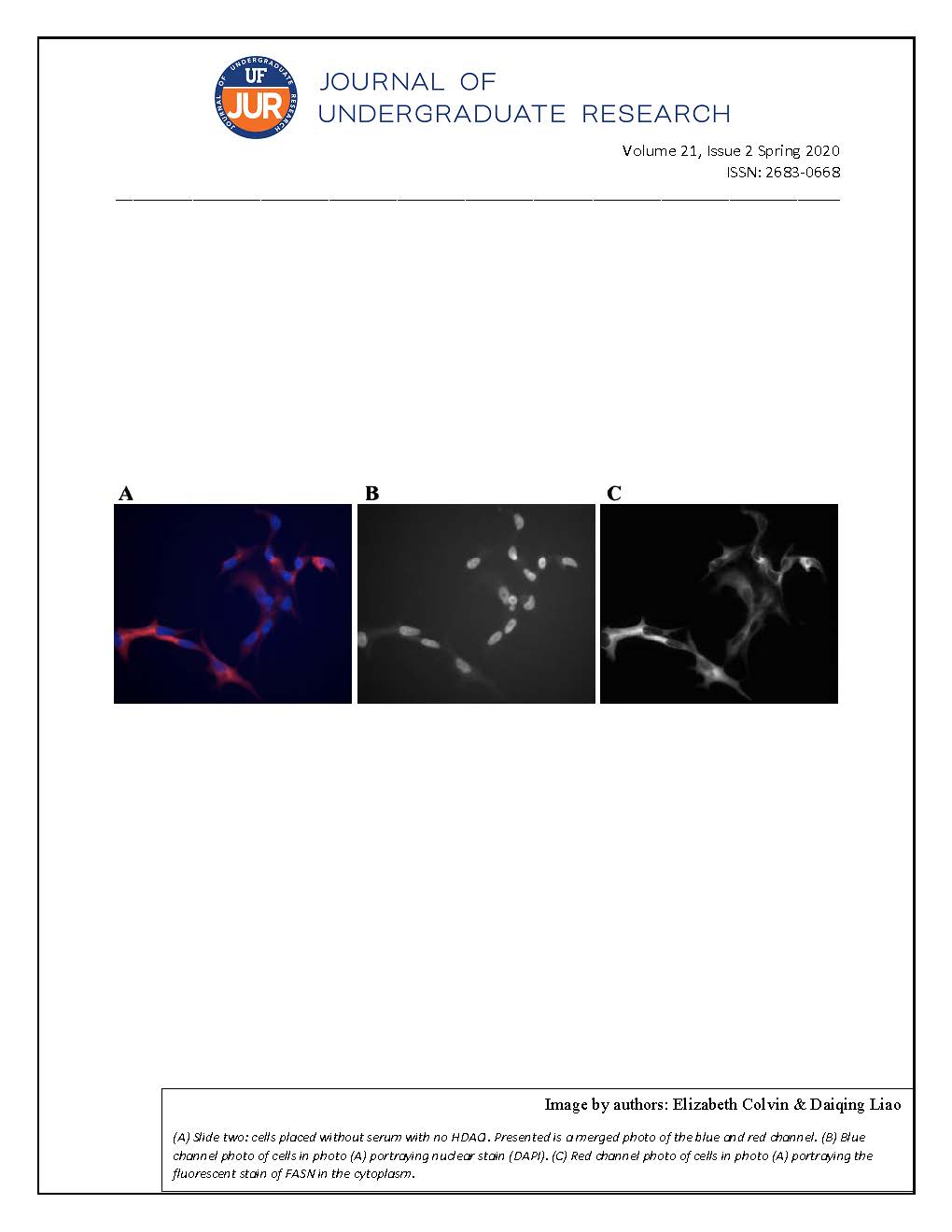Extracellular Vesicles Support the Survival of Serum-dependent cells in vitro
DOI:
https://doi.org/10.32473/ufjur.v21i2.108770Keywords:
Extracellular vesicle, FBS, serumAbstract
Extracellular vesicles (EVs) are 30-150 nm in diameter and are released by cells into the extracellular environment. They facilitate intercellular communication and may be involved in cell survival. Although serum-dependent cells are not obviously affected by depletion of EVs from the serum, we previously reported that cells in serum that contain EVs were more resistant to the drugs, enoxacin and bis-enoxacin, compared to cells in serum without EVs. This change in resistance led us to examine whether EVs are sufficient to maintain serum dependent cells in vitro. Here, we tested the effect of EVs on the survival RAW 264.7 cells and on 4T1 murine breast cancer cells. EVs were isolated by differential centrifugation. EVs were counted over various time periods. Cells were grown in alpha or Dulbecco’s minimal essential media supplemented with FBS, EVs from various sources, or with no supplements. Cell growth was determined by cell counts. In media without supplementation, the RAW 264.7 cells and 4T1 cells died by three days. Media supplemented with EVs from FBS allowed the cells to survive in the absence of FBS for one week or more. Being able to perform experiments on cells supported by EVs will simplify the interpretation of experiments. Efforts are underway to determine their mechanism by which EVs support cell survival.
References
Holliday, L. S., McHugh, K. P., Zuo, J., Aguirre, J. I., Neubert, J. K., & Rody, W. J. (2017). Exosomes: novel regulators of bone remodelling and potential therapeutic agents for orthodontics. Orthodontics & craniofacial research, 20 Suppl 1(Suppl 1), 95–99. doi:10.1111/ocr.12165
Huynh, N., VonMoss, L., Smith, D., Rahman, I., Felemban, M. F., Zuo, J., … Holliday, L. S. (2016). Characterization of Regulatory Extracellular Vesicles from Osteoclasts. Journal of dental research, 95(6), 673–679. doi:10.1177/0022034516633189
Lee Y., El Andaloussi S., & Wood M., (2012). Exosomes and microvesicles: extracellular vesicles for genetic information transfer and gene therapy, Human Molecular Genetics, 21(R1), R125–R134, doi:10.1093/hmg/dds317
Valadi H, Ekstrom K, Bossios A, Sjostrand M, Lee J, & Lötvall J. (2007). Exosome-mediated transfer of mRNAs and microRNAs is a novel mechanism of genetic exchange between cells. Nat Cell Biol. 9:654–659. doi: 10.1038/ncb1596
Vracar, T. C., Zuo, J., Park, J., Azer, D., Mikhael, C., Holliday, S. A., … Holliday, L. S. (2018). Enoxacin and bis-enoxacin stimulate 4T1 murine breast cancer cells to release extracellular vesicles that inhibit osteoclastogenesis. Scientific reports, 8(1), 16182. doi:10.1038/s41598-018-34698-9
Yáñez-Mó, M., Siljander, P. R., Andreu, Z., Zavec, A. B., Borràs, F. E., Buzas, E. I.,... De Wever, O. (2015). Biological properties of extracellular vesicles and their physiological functions. Journal of extracellular vesicles, 4, 27066. doi:10.3402/jev.v4.27066
Downloads
Published
Issue
Section
License
Some journals stipulate that submitted articles cannot be under consideration for publication or published in another journal. The student-author and mentor have the option of determining which journal the paper will be submitted to first. UF JUR accepts papers that have been published in other journals or might be published in the future. It is the responsibility of the student-author and mentor to determine whether another journal will accept a paper that has been published in UF JUR.

